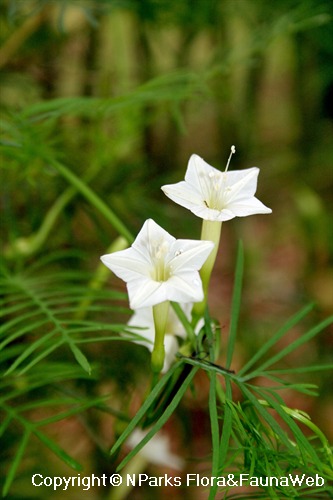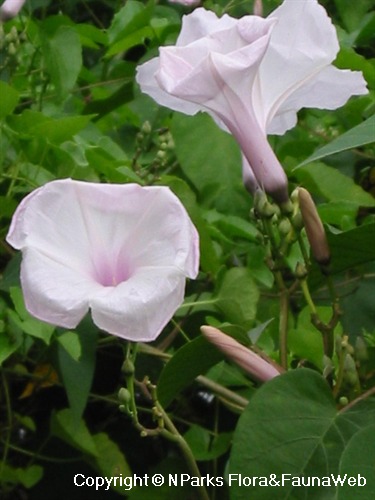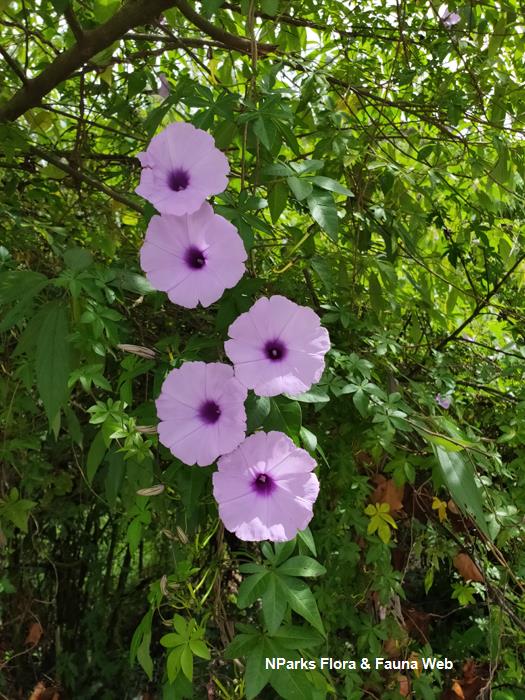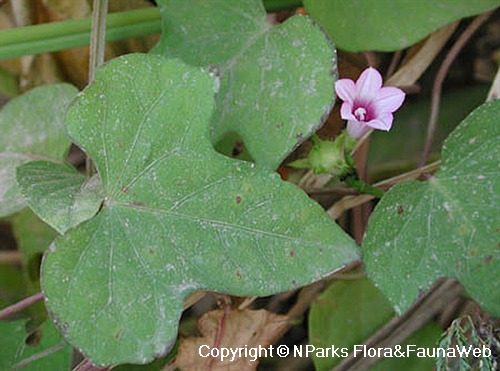
Back
Ipomoea grandifolia (Dammer) O'Donell
| Family Name: | Convolvulaceae |
| Synonyms: | Convolvulus trilobus, Ipomoea blancoi, Batatas triloba, Ipomoea triloba L. |
| Common Name: | Little Bell, Pink Convolvulus, Three-lobed Morning Glory, Aiea Morning Glory, 三裂叶薯 |
Name
Classifications and Characteristics
| Plant Division | Angiosperms (Flowering Seed Plants) (Dicotyledon) |
|---|---|
| Plant Growth Form | Climber, Creeper |
| Lifespan (in Singapore) | Perennial |
| Mode of Nutrition | Autotrophic |
| Plant Shape | Irregular |
| Maximum Height | 1 m to 3 m |
Biogeography
| Native Distribution | Tropical America |
|---|---|
| Native Habitat | Terrestrial (Grassland / Savannah/ Scrubland, Disturbed Area / Open Ground) |
| Preferred Climate Zone | Tropical |
Description and Ethnobotany
| Growth Form | Twining, herbaceous, mat-forming climber, up to 3 m high, with an annual life cycle. |
|---|---|
| Foliage | Leaves are tri-lobed with entire leaf margin (up to 6 cm wide). |
| Flowers | Trumpet-shaped flowers are pink or white with a red center (2 cm wide). Flowers are composed of 5 lobes that are fused together with each lobe having a sharply pointed tip in the middle of the lobe edge. |
| Fruit | Fruits are small 4-valved explosive capsules, maturing to dark brown. Small, orangish brown seeds are approximately ellipsoid with one side slightly flattened. A ridge runs along the length of the seed, and 2 small, wing-like flaps slightly cover one end of the seed. Seeds are highly poisonous. |
| Habitat | Found in waste lands and reclaimed areas of Singapore. |
| Ethnobotanical Uses | Food (Herb or Spice) Medicinal: Leaves used in Nigeria to treat rheumatism and boils. Leaves used as poultice for headaches in Malaya. |
Landscaping Features
| Desirable Plant Features | Ornamental Foliage, Ornamental Flowers |
|---|---|
| Landscape Uses | Coastal, Vertical Greenery / Green Wall |
| Thematic Landscaping | Naturalistic Garden |
Fauna, Pollination and Dispersal
| Fauna Pollination Dispersal Associated Fauna | Butterfly Host Plant |
|---|---|
| Seed or Spore Dispersal | Abiotic (Explosive Dehiscence) |
Plant Care and Propagation
| Light Preference | Full Sun |
|---|---|
| Water Preference | Moderate Water |
| Rootzone Tolerance | Fertile Loamy Soils, Well-Drained Soils, Saline Soils / Salt Spray |
| Propagation Method | Seed, Stem Cutting |
Foliar
| Foliage Retention | Evergreen |
|---|---|
| Mature Foliage Colour(s) | Green |
| Mature Foliage Texture(s) | Scaly |
| Foliar Type | Simple / Unifoliate |
| Foliar Arrangement Along Stem | Alternate |
| Foliar Shape(s) | Non-Palm Foliage (Ovate) |
| Foliar Venation | Pinnate / Net |
| Foliar Margin | Palmately Lobed |
| Foliar Apex - Tip | Obtuse |
| Foliar Base | Cordate |
| Typical Foliar Area | Notophyll ( 20.25cm2 - 45 cm2 ) |
Non - Foliar and Storage
| Stem Type & Modification | Herbaceous |
|---|---|
| Root Type | Underground (Fibrous Root) |
Floral (Angiosperm)
| Flower & Plant Sexuality | Bisexual Flowers |
| Flower Colour(s) | Pink, Purple |
|---|---|
| Flower Symmetry | Radial |
| Individual Flower Shape | Trumpet-shaped |
| Ovary Position | Superior / Hypogynous |
| Flowering Habit | Polycarpic |
Fruit, Seed and Spore
| Mature Fruit Colour(s) | Brown |
|---|---|
| Fruit Classification | Simple Fruit |
| Fruit Type | Dehiscent Dry Fruit , Capsule |
Image Repository
Others
| Master ID | 12973 |
|---|---|
| Species ID | 3322 |
| Flora Disclaimer | The information in this website has been compiled from reliable sources, such as reference works on medicinal plants. It is not a substitute for medical advice or treatment and NParks does not purport to provide any medical advice. Readers should always consult his/her physician before using or consuming a plant for medicinal purposes. |

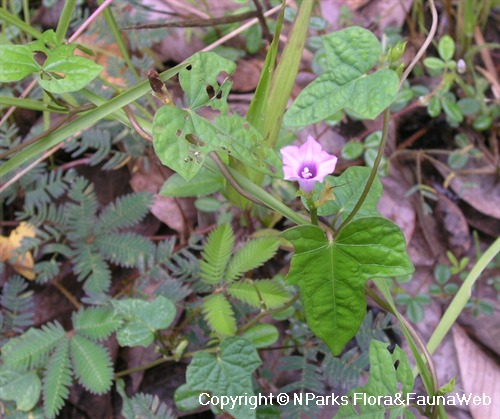
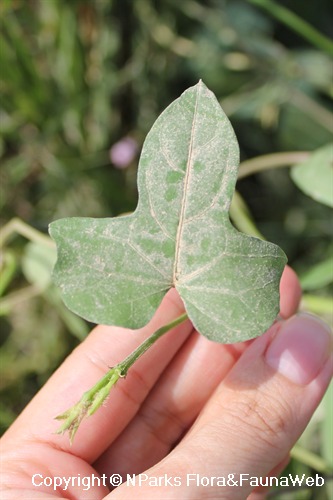
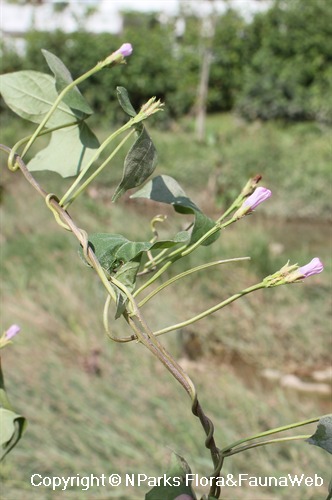
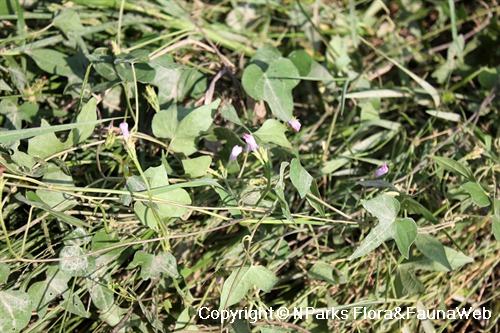

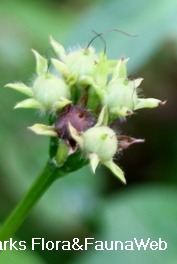
_lowres.jpg)
